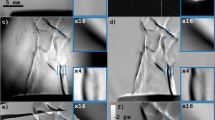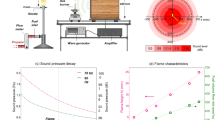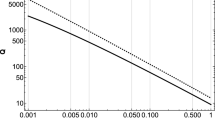Abstract
A COMMUNICATION1 has drawn attention to the possibility of using flames as sound recorders and amplifiers. A technique was described (Fig. 1 of ref. 1) in which sound waves were produced by modulating the flow rate of oxygen to a small diffusion flame. The region of sound generation, it was stated, is associated with that of maximum flame luminosity, and this luminosity contains the imposed modulation. The authors suggested that the modulating signal could be reproduced acoustically simply by amplifying the photometric recording of direct flame luminosity.
This is a preview of subscription content, access via your institution
Access options
Subscribe to this journal
Receive 51 print issues and online access
$199.00 per year
only $3.90 per issue
Buy this article
- Purchase on Springer Link
- Instant access to full article PDF
Prices may be subject to local taxes which are calculated during checkout
Similar content being viewed by others
References
Babcock, W. R., Baker, K. L., and Cattaneo, A. G., Nature, 216, 676 (1967).
Thomas, A., and Williams, G. T., Proc. Roy. Soc., A, 294, 449 (1966).
Hurle, I. R., Price, R. B., Sugden, T. M., and Thomas, A., Proc. Roy. Soc., A, 303, 409 (1968).
Price, R. B., Hurle, I. R., and Sugden, T. M., Twelfth (Intern.) Symp. Combustion, The Combustion Institute (in the press).
Author information
Authors and Affiliations
Rights and permissions
About this article
Cite this article
HURLE, I., PRICE, R. & PYE, D. Photometric Recording of Sound from Flames. Nature 219, 849–850 (1968). https://doi.org/10.1038/219849a0
Received:
Published:
Issue Date:
DOI: https://doi.org/10.1038/219849a0
Comments
By submitting a comment you agree to abide by our Terms and Community Guidelines. If you find something abusive or that does not comply with our terms or guidelines please flag it as inappropriate.



